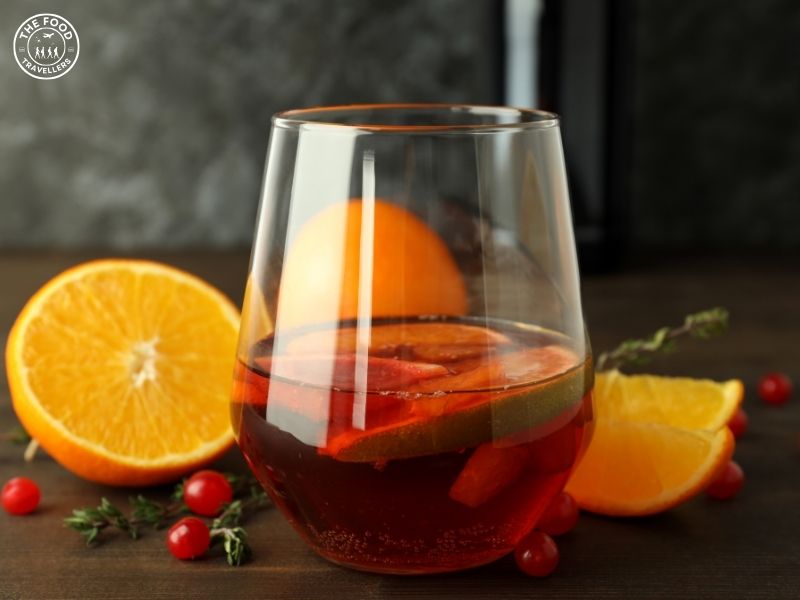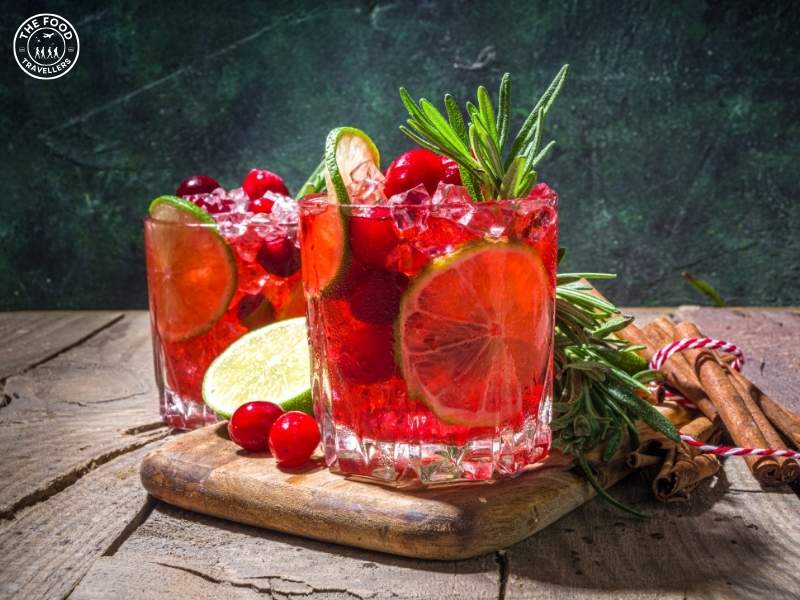Experience the Zest of Cranberry Citrus Bliss
Cranberry juice has a history that goes back centuries. The Native Americans used it for medicinal purposes, but they were greatly valued because of their health benefits, which included treating bladder infections and wounds. With time, the tart and vibrant juice was popularized in early American cuisine, becoming part of different recipes, including beverages.
As of the late 20th century, cranberry juice emerged into prominence. The bright color and its tartness, however with proper balancing were great mixers for not only alcoholic but also other, so-called virgin beverages. It’s only reasonable with the current popularity of so-called mocktail beverages, that highlights imaginative mixers without alcohol. The recipe’s versatility allows it to be paired with any type of flavor, from citrusy tastes to spices, making it suitable for one who wants to enjoy sophisticated drinks without the alcohol content.
History of the Cranberry fruit:
The cranberry is a small, tart fruit that has had a rich history for thousands of years. Native to North America, the cranberry plant, scientifically known as *Vaccinium macrocarpon*, is one of only a few commercially grown fruits that originated on the continent. The first in line to appreciate the potential of cranberries were indeed the indigenous peoples, especially the Native American tribes. They called the fruit “sassamanash” and used it not only as a food source but also for medicinal purposes and as a dye for textiles.
Cranberries were an essential component of pemmican, a combination of dried meat, fat, and cranberries, which provided long-lasting nutrition. Native Americans also used cranberries to treat wounds and ailments because the natural acidity of the fruit helped preserve food and served as a source of vitamins.
Early years of Cranberry:
European settlers arrived in the early 1600s and quickly adopted cranberries into their diet. The Native Americans taught the Pilgrims about this fruit, which they included in first Thanksgiving feasts. The settlers started referring to the fruit as “craneberry,” because the flower resembled the head and neck of a crane.
Commercial cultivation of cranberries began in the 19th century, with Henry Hall, a Revolutionary War veteran from Massachusetts, credited as the first to cultivate cranberries in bogs. He noticed that sand blown onto the cranberry vines helped them thrive. Today, this technique is referred to as “wet harvesting.”.
Cranberries are produced in the United States, Canada, and Chile, mainly by the U.S. They have a strong presence of cranberry bogs in states such as Wisconsin, Massachusetts, New Jersey, and Oregon. Cranberries also find a place not just for their culinary values but for their health properties; they are rich in antioxidants and are good for urinary tract health. Their brilliant history keeps on enriching cultures across the globe.
Recipe for making Cranberry Citrus Bliss:
This is the revitalizing taste that mixes the tartness of the cranberry juice with the citrus flavor zest with a hint of herbal complexity into a perfect drink for an occasion.
- 3 oz / 90 ml cranberry juice, unsweetened for a more tart flavor
- 1 oz / 30 ml fresh lime juice
- 1 oz / 30 ml fresh orange juice
- 1 oz / 30 ml honey or agave syrup, adjusted to desired sweetness
- 4-5 fresh mint leaves; plus a sprig for garnish
- Soda water or tonic water; to top off
- Ice cubes
- Orange slices and lime wedges; for garnish
Equipment needed for this recipe:
- Cocktail shaker
- Jigger or measuring spoons
- Strainer
- Glass; highball or tumbler
Step-by-step Instructions for Cranberry Citrus Bliss:
Muddle the Mint:
In a cocktail shaker, add the fresh mint leaves and honey (or agave syrup). Using a muddler or the back of a spoon, gently crush the mint leaves. This releases the mint’s essential oils, enhancing the drink’s flavor.
Mix the Juices:
Add the cranberry juice, lime juice, and orange juice to the shaker with the muddled mint. Fill the shaker with ice cubes and secure the lid.
Shake It Up:
Shake vigorously for about 15 seconds until well chilled and combined.
Strain and Serve:
Strain the mixture into a highball or tumbler filled with ice cubes. This ensures that the mint leaves do not end up in the final drink.
Top It Off:
Gently pour soda water or tonic water over the drink to add a fizzy touch. Stir lightly to combine.
Garnish:
Garnish with an orange slice, a lime wedge, and a sprig of mint for a beautiful presentation.
Enjoy:
Serve immediately and enjoy the refreshing blend of flavours!
Conclusion
This Cranberry Citrus Bliss mocktail is not only yummy but also a celebration of the rich history of cranberry juice. Vibrant colors, refreshing taste, and perfect for celebrations or any casual gathering with friends and family will definitely make this drink a hit. Adding the citrus and mint makes this drink a great choice to suit anyone looking for an amazing non-alcoholic drink that feels festive and classy. Cheers!
Share your thoughts on our Instagram channel @thefood.travellers




Comments are closed.